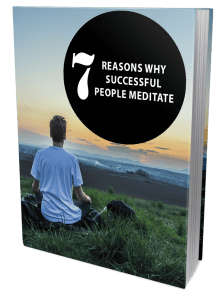Taking the “Mindfulness” Into Your Stride
The examples of mindfulness, which is practiced in Zen, have been considered by its followers as one of the most efficient and effective methods for transforming a person into a Buddha. Since years, there have been different techniques that are practiced by people from around the world. Some of these techniques were derived from East Asian culture and others from the Eastern philosophy that is based on the concept of accepting oneself as an independent being.
There are examples of mindfulness in everyday life and the article below will show you 4 mindfulness exercises you can start immediately at the comfort of your own home.
1. Pay Attention To Being Mindful
A lot of people like to sit at the table or in the chair, but if they want to eat something, they keep looking at the plate and it is hard to focus on the food. It is difficult to remember all the details, but we are willing to do it. We just keep having to remind ourselves to pay attention.
It’s easy to focus on other things, but this is not the way to pay attention. If you want to pay attention, you need to be fully present in your mind, body and emotions.
2. 1-minute Deep Breath
Take one minute to direct your attention to your breath. Now think about everything else that is going on around you. If you are sitting in a busy room with lots of noise, try to be aware of the noise. If you are in a busy street and you see a car coming towards you, notice it and tell yourself to pay attention to the sounds.
With your eyes closed, gently focus on your breath. Notice where the breath is in your belly, where it goes in your throat, how the vibrations are in your chest.
Feel the sensations in your abdomen, in your belly, in your chest, in your throat. Breathe in, feel the sensation and breathe out. Notice where you are in your body and your awareness of the present moment.
When you feel tired, tired is a sensation. The feeling of tiredness is a sensation. You may notice a sore throat, a headache, or the sensation of muscles in your shoulders and neck.
The more you notice the sensations that arise, the less likely you are to be distracted by the thoughts and feelings that are constantly around you. With the sensations, there is no false sense of separation. You are not an object, an observer, or a subject of observation. You are aware of yourself and others and what is happening all around you.
[button_3 text=”download-now.png” align=”center” href=”https://67goldenrules.com/mindful-meditation-gift/” new_window=”Y”/]
3. Live In The Moment
One of the keys to living in the moment is noticing when you are paying attention to what is happening and when you are paying attention to what is not happening. When is it just now, and when is it not just now? Living in the moment means that you are always thinking about what is happening right now. It is hard to be in the moment if you are thinking about what is going to happen in the future.
So pay attention to the sensations in your body, and to the thoughts and feelings that are going on around you. If you find yourself in a place where you are focused on what is not happening, simply allow yourself to look and be. What is there? If you want to pay attention to what is there, then acknowledge it.
It is easy to be aware of the sensations in your stomach, and breathe in, feel the sensations and breathe out. What you are doing is paying attention to what is here and now.
It’s easy to pay attention, but not easy to be fully present in the moment. Pay attention to your breath, to the sensations in your body, to the details of the situation. Pay attention to where you are in your body and in your experience, and you will feel more in the moment and enjoy being in the moment.
4. Accept Yourself
In order to achieve the benefits of mindfulness, one has to begin with a thought of acceptance. Accepting oneself as being a separate entity from the body is not easy. For some people, it is actually the first step towards enlightenment. It is about learning to live in the present moment and accepting that everything is just as it is.
3 Forms of Mindfulness And Their Link To Meditation
There are three forms of mindfulness that are practiced by different cultures and religions.
- Visualizing yourself in a meditative state with a peaceful mind
- Attending to your breathing without letting your mind wander off. Important tip: Some people choose to concentrate on their breathing as if they were breathing through a straw.
- Focusing on different objects that we might find outside our bodies. These objects include the sound of a butterfly’s wings or the movement of the wind on a breeze.
When you focus on your breathing, your mind will stay in the present moment.The practice of meditation is one of the most popular forms of mental exercises. Some people get so into this that they start to think about their breathing even when they’re not actually doing it.
Different meditation techniques are practiced by different people. However, practicing mindful movements such as the eye focusing and attentive listening is a common feature in many types of meditation.
Conclusion
The benefits of mindfulness are several in that it can improve a person’s blood circulation, help people gain more focus, and reduce the severity of physical and emotional problems.
Meditation is a very important practice for improving a person’s health. If you are interested in gaining more knowledge about the various techniques of practicing meditation, you should visit an expert first.


